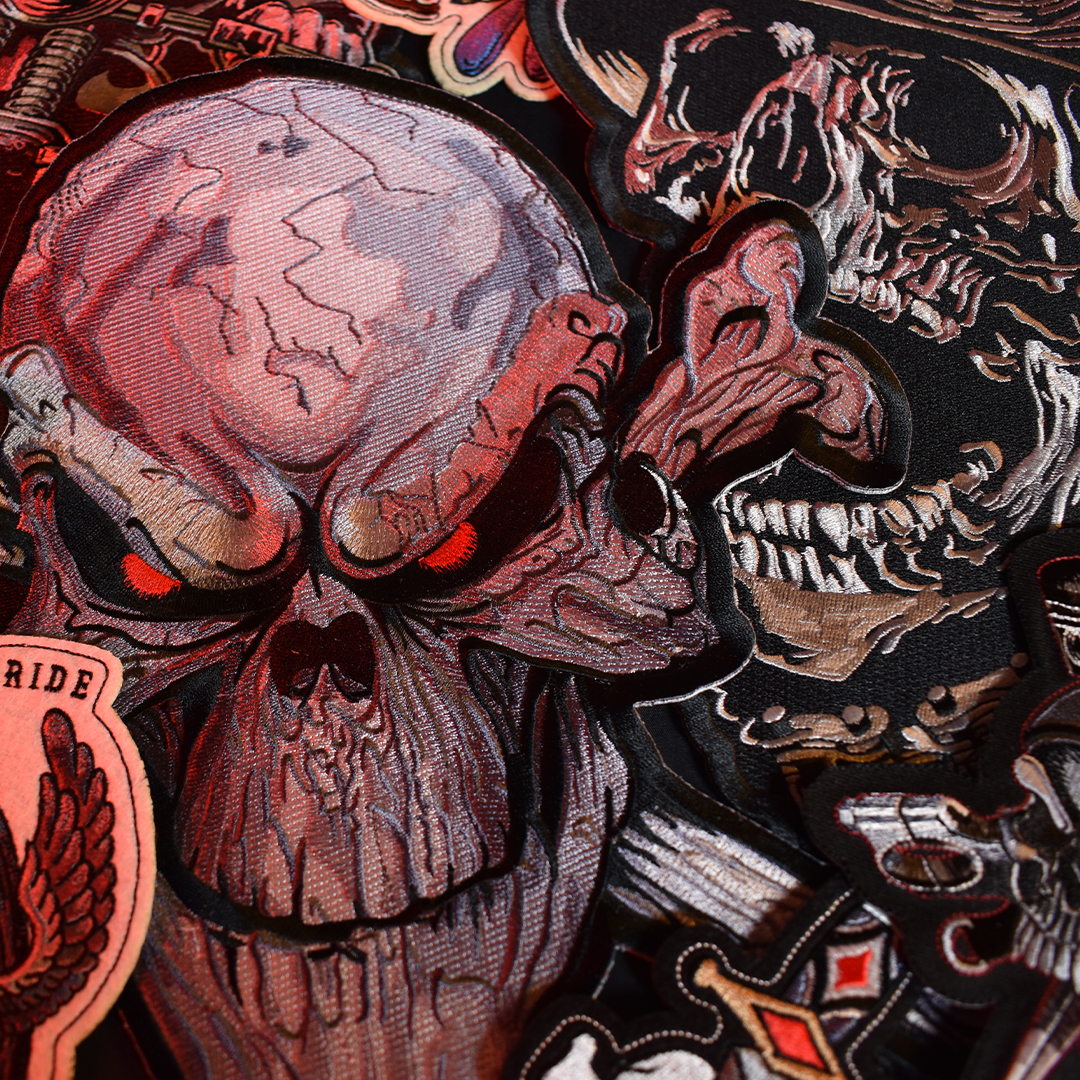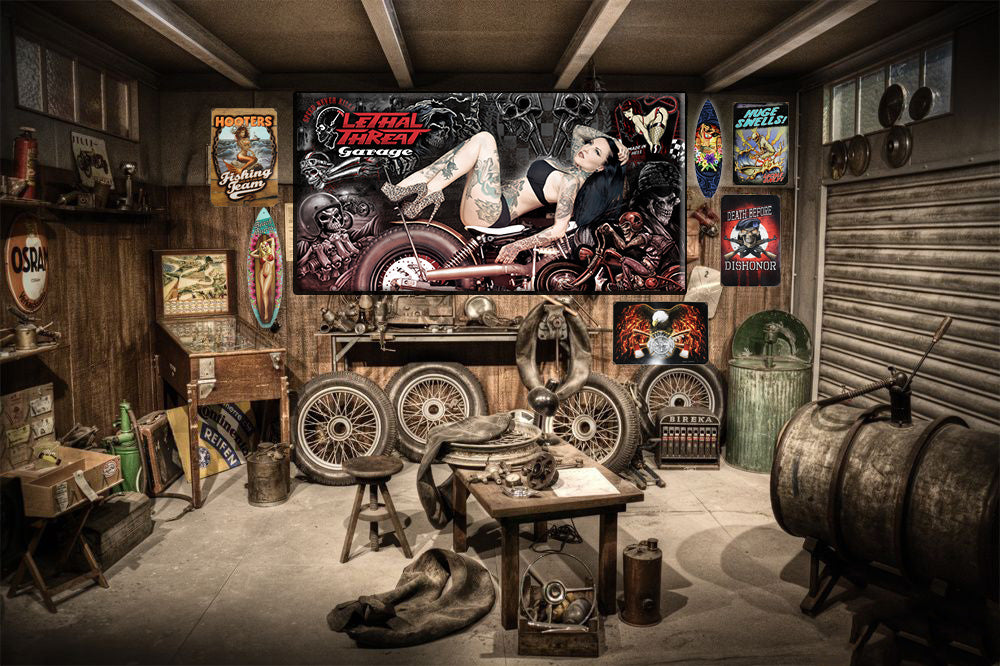Von Dutch and the History of the Flying Eyeball

Let Lethal Threat tell you about Von Dutch's flying eyeball, how it became popular and the tragic story behind the creator's legacy.
We've seen it time and time again: Heroes come and go. People rise and fall. And that makes determining legacies complicated.
One of the key philosophies behind hot rod culture is independence. We are not going to tell you how to feel about things. We aim high when we are driving, and we take in everything around us. That means we'll stick to the facts about the key figures in the counterculture, so you can figure out how to feel for yourself.
And Von Dutch is certainly someone with a story. When you think of Von Dutch today, you're likely to think of the fashion brand you saw Britney Spears and Paris Hilton wearing in the early 2000s, but the company name actually comes from an important figure in Kustom Kulture.
Long before celebrities and movie stars were seen wearing trucker hats in the mainstream, mechanic and artist, Kenny Howard had coined the name Von Dutch in the 1950s. It wasn't until years after his death when his daughters sold the rights to his signature that the brand came to be. You've likely seen his influence in countercultural art and beyond without even realizing it, most famously, his flying eyeball logo, which has become a staple of hotrod culture to this day.


With a design that's become as commonly used and reused as the eyeball, it might surprise you that the eponymous clothing brand is more well-known than he is. Not to worry, we've got you covered with a brief history of the provocateur, his legacy as a cult artist, and the many ways in which that legacy has been tarnished through the years - both by corporate interests, and by Howard himself.


Von Dutch eyeball
If you've ever seen a classic car or motorcycle with a pinstripe design, and were taken aback by its sleekness, Howard is at least indirectly responsible. One of the pioneers of the Kustom Kulture movement, Von Dutch is credited with popularizing pinstriping vehicles, painting hundreds of motorcycles across the country in the 1950s that spawned a cultural movement. He also came up with the idea to use a "K" in the spelling of Kustom Kulture, an homage to German aesthetics (something that he and many other mechanics of the time were fascinated by).
To give an idea of the kind of person he was, his famous nickname "Dutch" was given to him by his parents because he was "as stubborn as a Dutchman." Ever the firebrand, he chose to add the "Von" at the end as a way to wear the nickname as a badge of honor in his art, and jokingly, so the name would translate to "By German" in English.
The flying eyeball can be traced back to the beginning of Von Dutch's career. According to him, the symbol is meant to represent an all-seeing and all-knowing power above, serving as a reminder that we are never truly alone in this world. As popular as it was at the time, the eyeball has become a piece of art that transcended the movement that birthed it. To this day, tattoos, shirts, and more feature the winged eyeball. You can even find a handful of designs inspired by, and even including the flying eyeball in our store if you feel inclined to look.

On September 19, 1992, Von Dutch passed away from longtime health complications due to alcoholism. Although he wasn't exactly a household name at the time of his death, Von Dutch carried enough currency in the art world that Ed Boswell would begin to use the name to sell apparel with the permission of his remaining family. Von Dutch was famously indifferent to his art and namesake being used, believing that patents were egotistical. This allowed easy access for people like Michael Cassel and Robert Vaughn to eventually purchase the clothing rights in the year 2000. With this purchase, the clothing brand as it is known today began.


Making working class high-class
Von Dutch Originals envisioned selling clothing that looked working class, but as high-end fashion. As seen by the pop culture effect of the brand in the early 2000s, they became far more successful than anticipated. While the corporate sensibility and cultural appropriation of the brand go against the late Von Dutch's values, as well as the values of the counterculture at large - we have to admit that it was pretty wild to see so many A-list celebrities dressing like they had a cross country shipment to deliver for a couple of years. As can often happen in the corporate world, a mixture of poor management and greed led to infighting within the company, and by the 2010s the brand had hit rock bottom. Even with new ownership, the company has never fully recovered to its former glory, although a slow but steady resurgence in popularity for the brand may change that.
While a backstabbing corporate fallout is certainly damaging to the image of any countercultural figure, this would prove to be far from the most negative association to make in regard to Kenny Howard. In 2004, multiple articles revealed that Howard was racist and antisemitic, specifically citing the hateful and offensive remarks in a letter that he wrote on his deathbed. This contributed to the clothing brand's failure and called Howard's potential cult status into question.

There is no denying that regardless of his intent (as many of his friends have stated, he may have been trying to shock people, or was really just a misanthrope) that the comments he made in the letter, as well as the intolerance he displayed in life, are unacceptable and need to be addressed as such. It is impossible to erase him from the history of custom mechanics, so the least that we can do is make sure that the whole truth is told, no matter how ugly it may be.
Although important outsider art was created by a man who expressed harmful beliefs, one of the most beautiful things about art is the way it has the potential to live outside the shadow of its creator. While many believe that art endures only because its associationwith who made it, the truth is, any work can stand independently of their respective artist. This could not be truer for the flying eyeball. Artists of all ages are still finding new unique ways to design it, and its popularity as a symbol dwarfs the man himself. This is why despite its dubious history, we look to find the value in the Von Dutch name.

From the eyeball with wings to that crazy bug-eyed rat, from the Grim Reaper to the devil himself, your bros at Lethal Threat are intimately familiar with all the key characters and icons that are part of biker culture. Our T-shirts, stickers and other gear are filled with them. Instead of trying to copy a trend, however, we set it: Because we live and breathe motorcycles and hot rods, our designs are loaded with high-octane authenticity. We don't pull punches or cut corners when making gear for your life.















Leave a comment